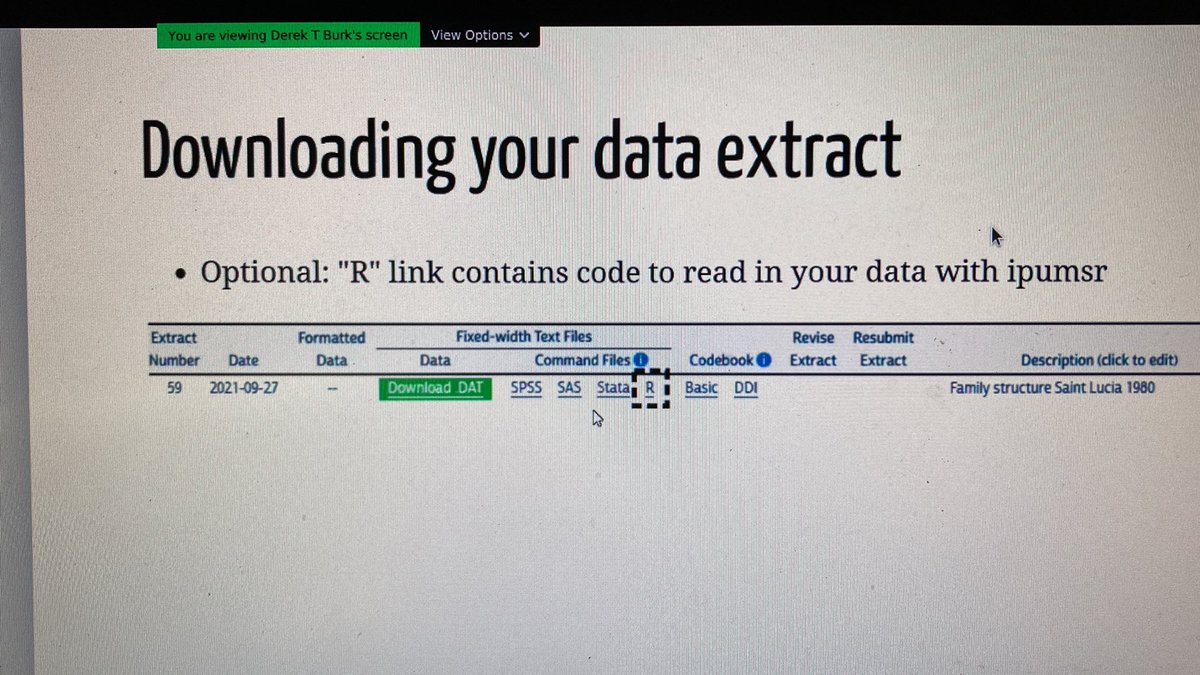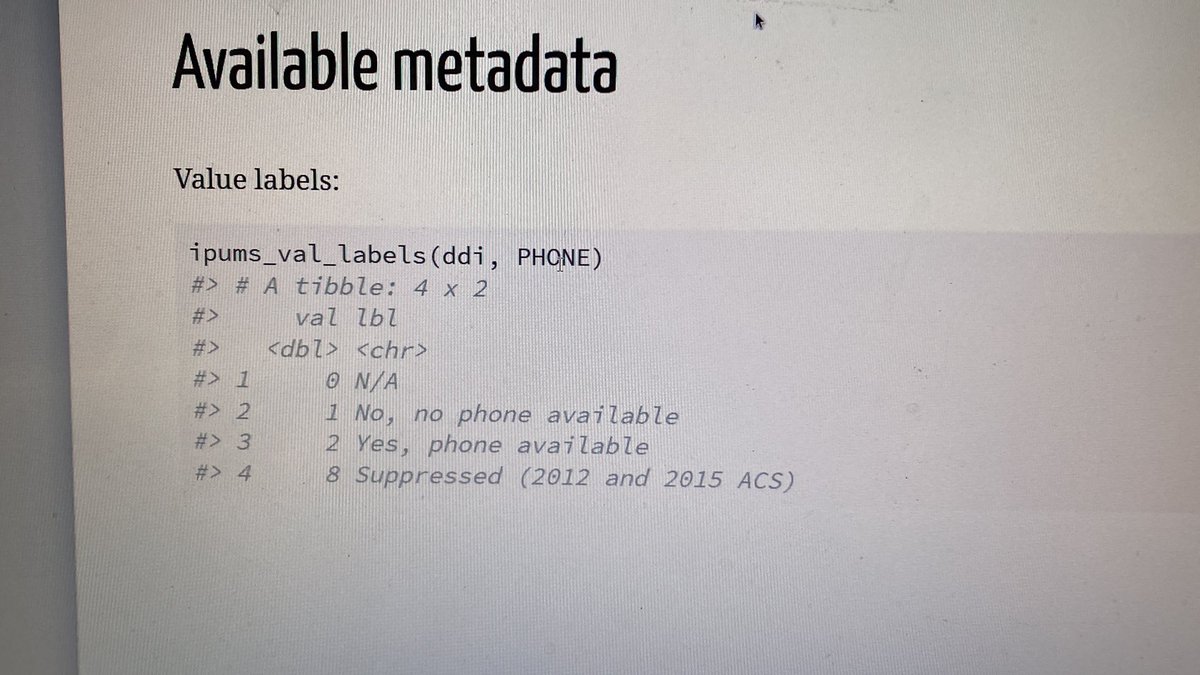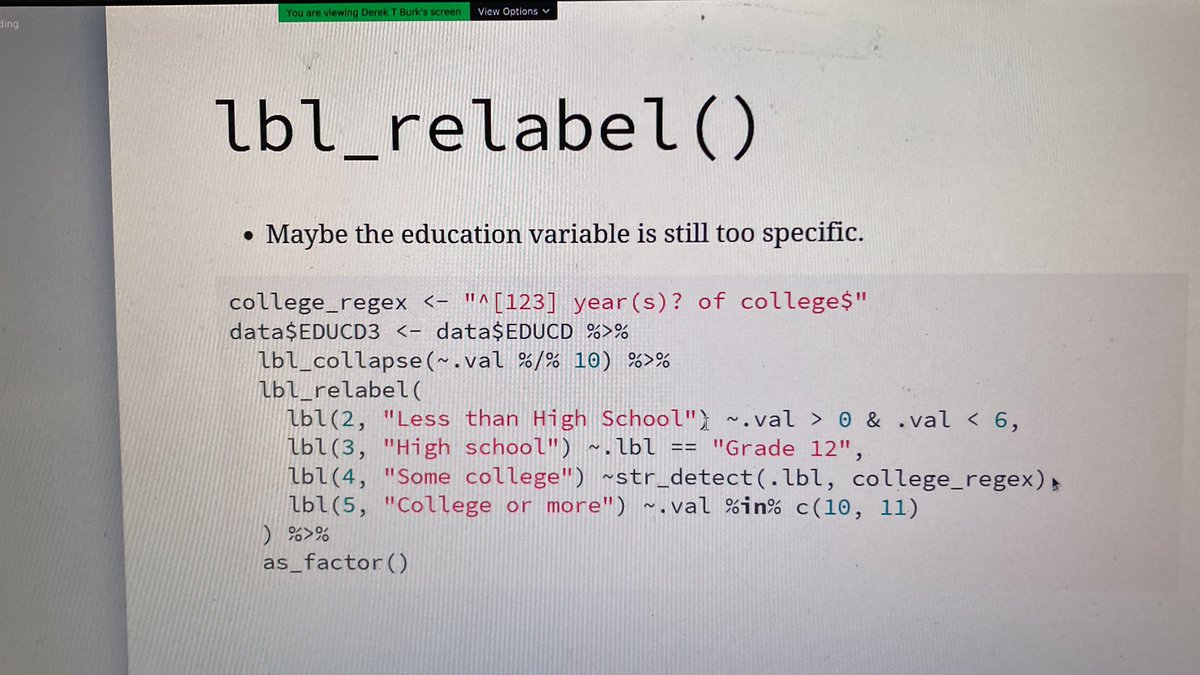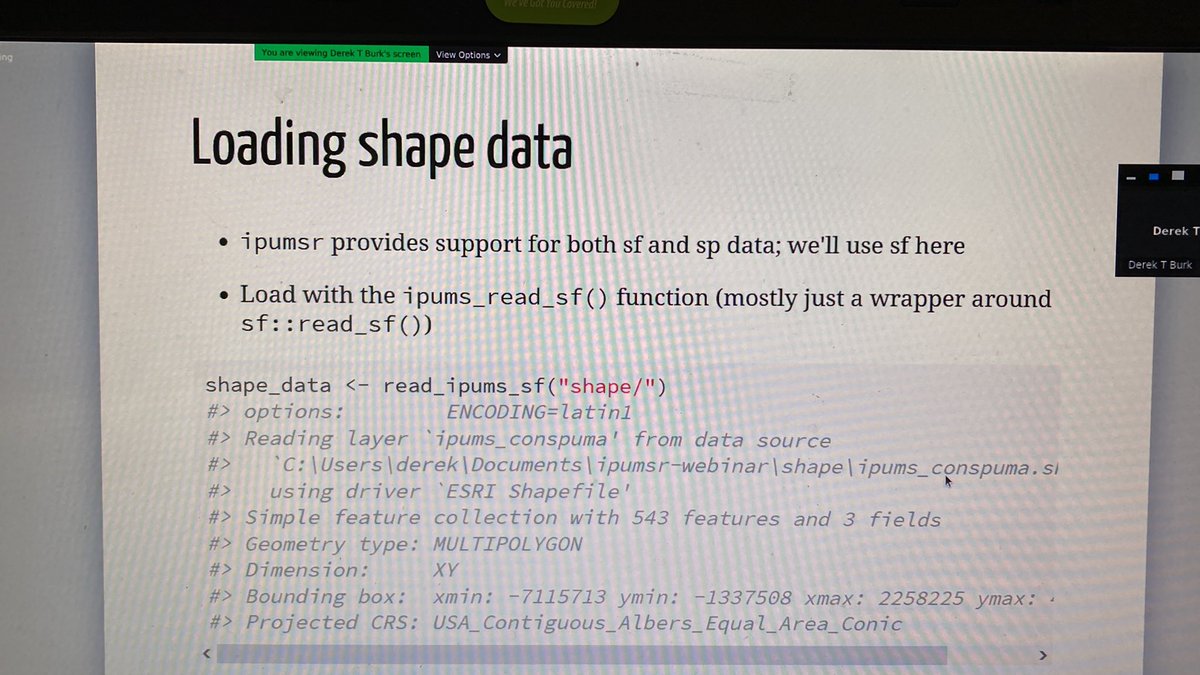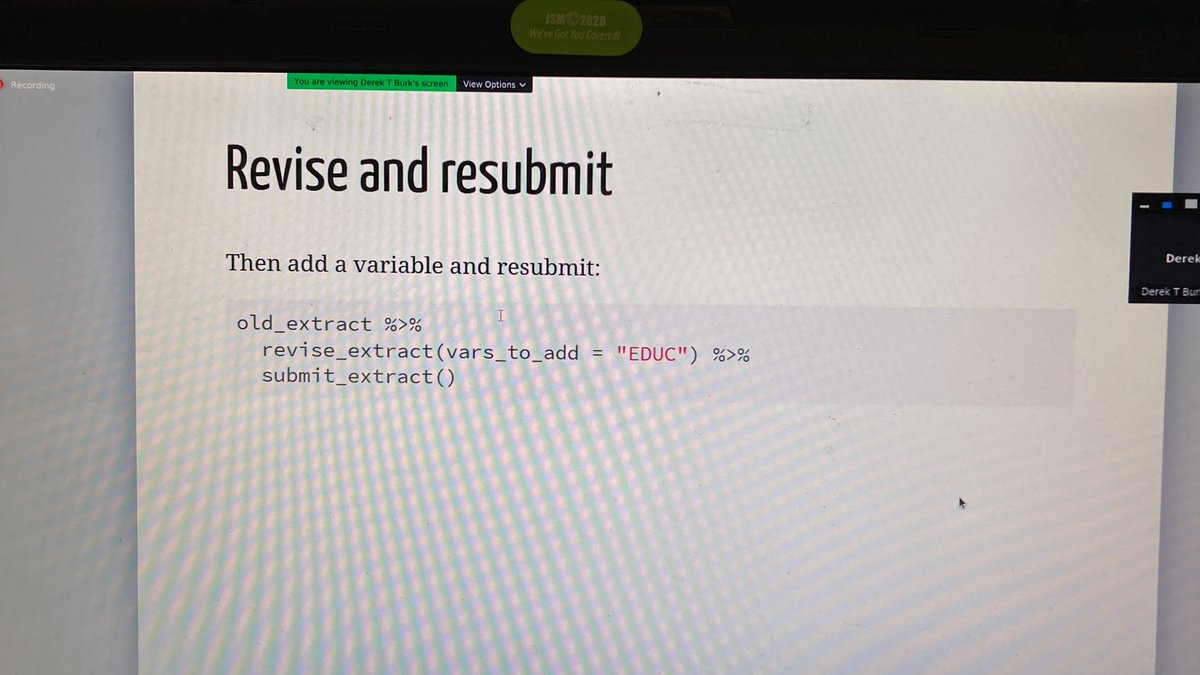
Webinar on @ipums data @popdatatech @nhgis @ipumsi and I am probably forgetting their other accounts - human population data… 







… geographic data @dcvanriper … 

#rstats backbone infrastructure of library(ipumsr) 
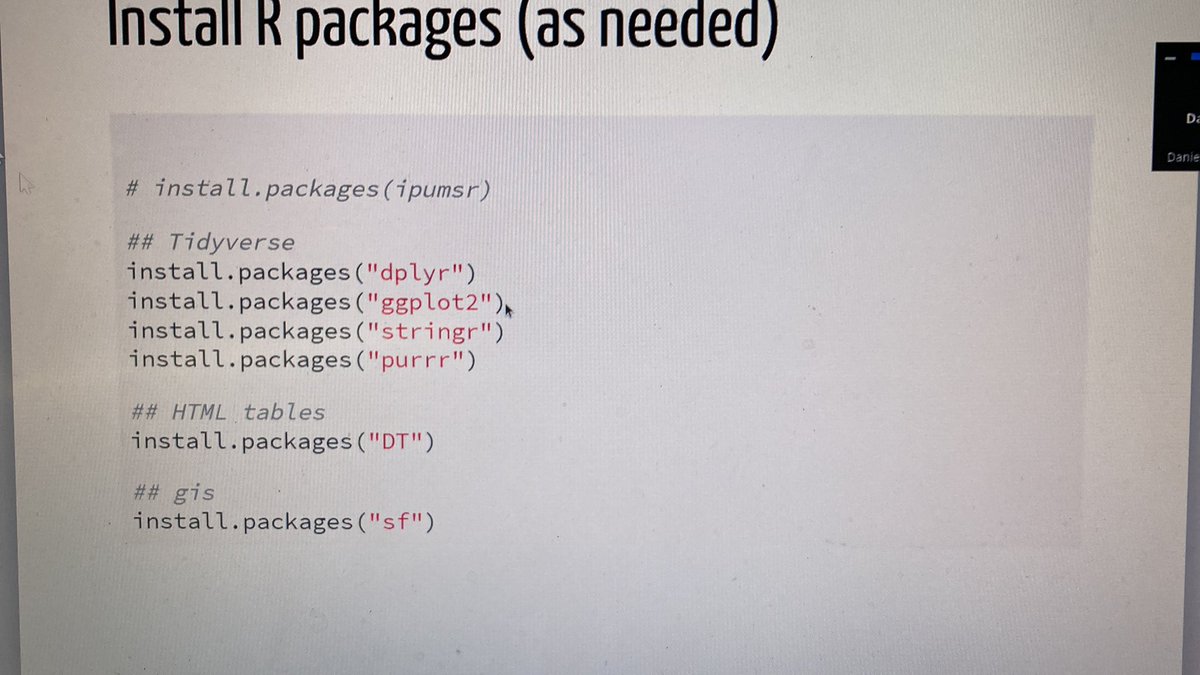
Your daily reminder that #rstats factor variables suck big time compared to Stata and SAS
I am not crying, you are crying

I am not crying, you are crying


Helper functions: replace missing values. These suck in #rstats compared to Stata and SAS, too: in the latter, you can have extended missing values .a:.z, and they all can be labelled with the reasons it is missing (not in pop, refused, not applicable, etc.) 



Another helper: recode and label new values. Very helpful for hierarchical classification codes where you can divide by 10 or 100 to obtain the higher level / fewer digits code. Labels are copied from the lowest numbered original category - would need extra work down the line 



Coming soon - @popdatatech API - ask to beta test. Sharing extract definitions is important for reproducibility! 




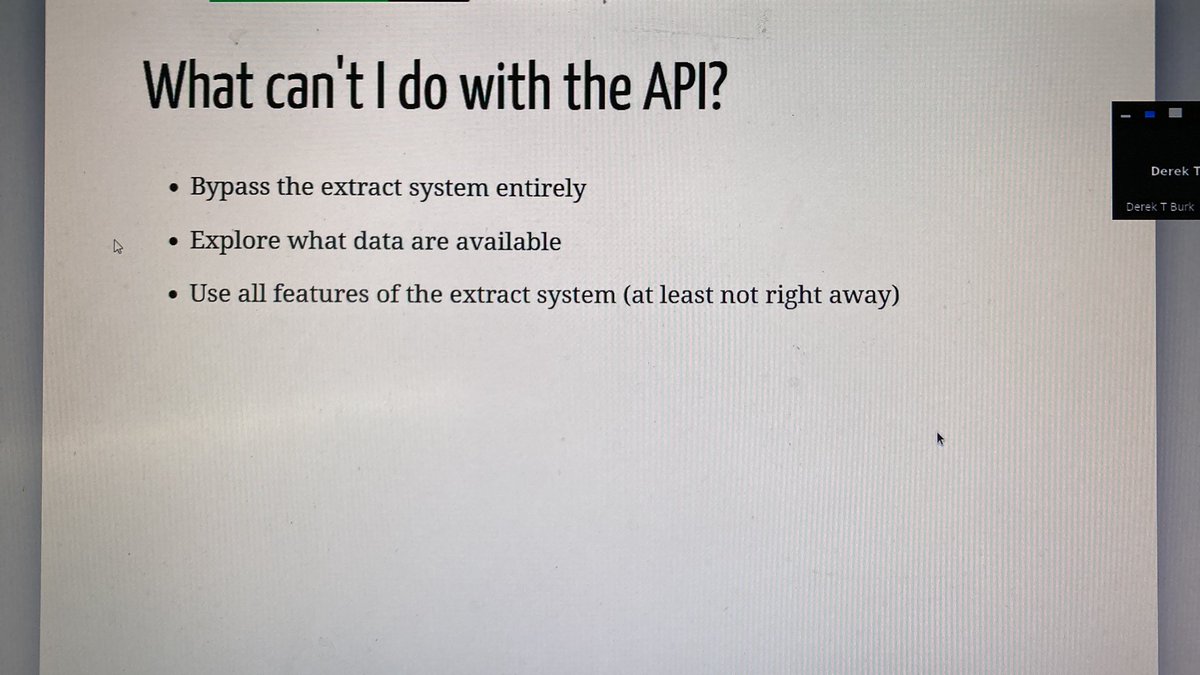
Everything you need to know about @ipums data and this presentation 
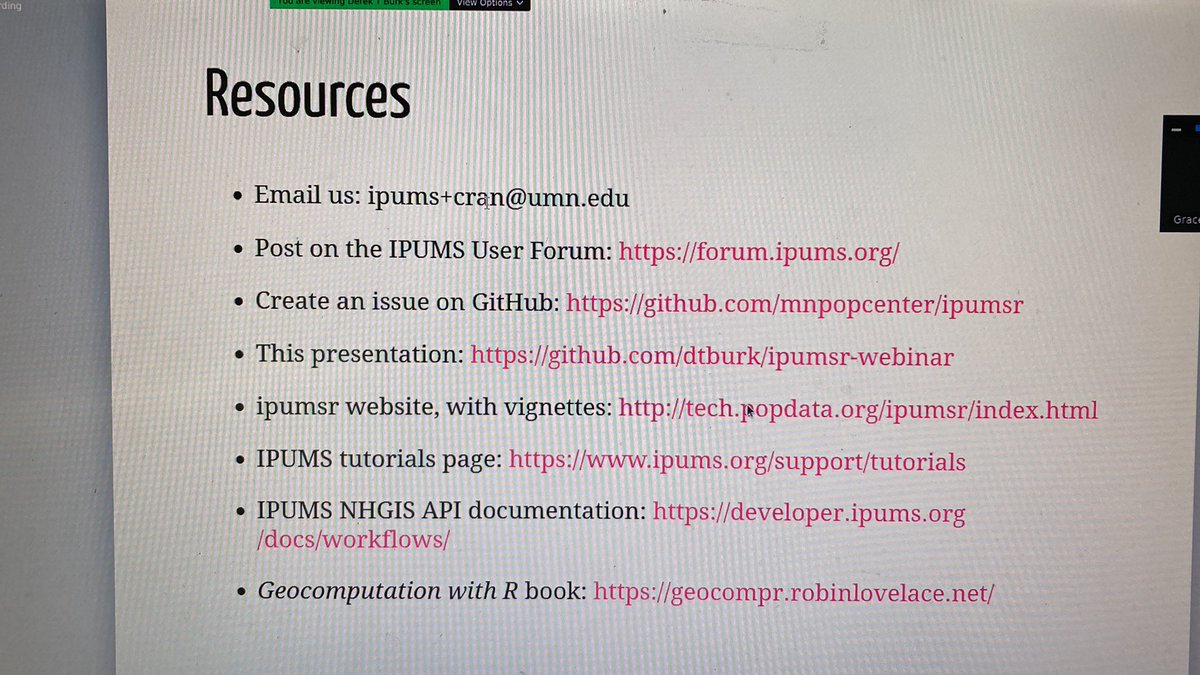
@threadreaderapp unroll
All others: please retweet this last entry rather than the first ;)
All others: please retweet this last entry rather than the first ;)
• • •
Missing some Tweet in this thread? You can try to
force a refresh





